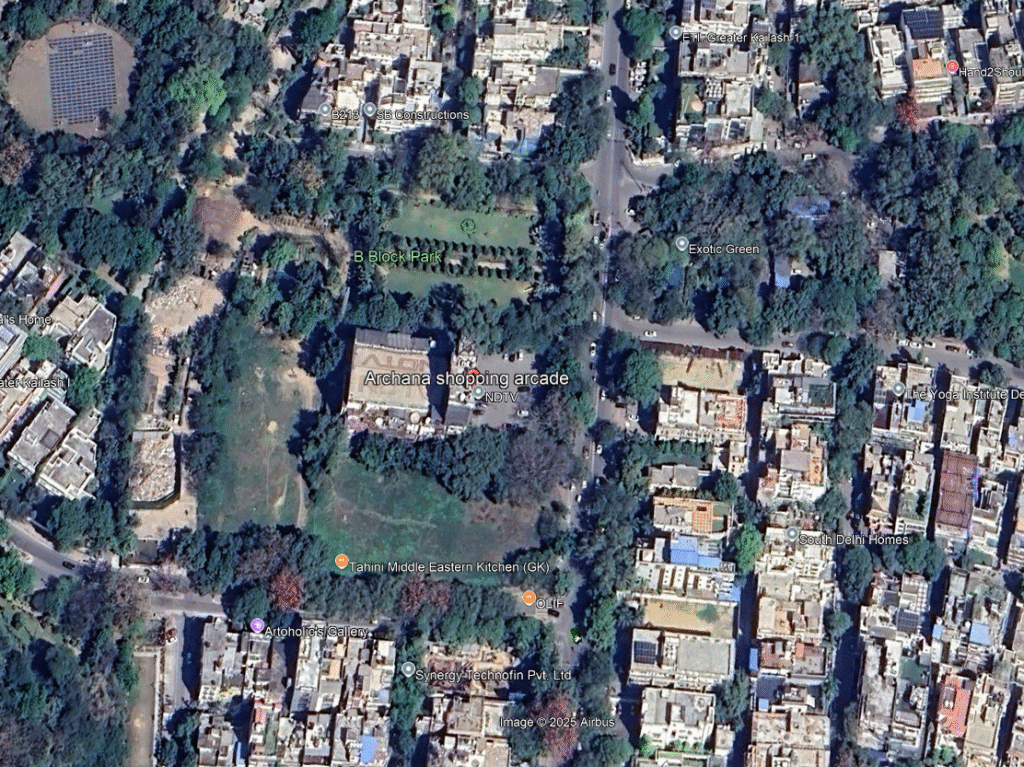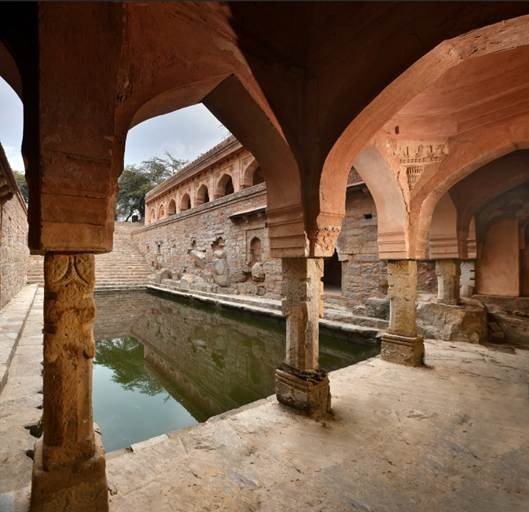In a landmark achievement for heritage conservation, the Archaeological Survey of India (ASI), in partnership with the World Monuments Fund India (WMFI) and the TCS Foundation, has completed the meticulous restoration of Rajon ki Baoli, a 16th-century stepwell located in the historic Mehrauli Archaeological Park, New Delhi. This project, part of WMFI’s Historic Water Systems of India initiative and funded by the TCS Foundation, underscores the critical role of traditional water systems in addressing modern challenges like climate change while preserving India’s architectural legacy. The restored Rajon ki Baoli, a masterpiece of Lodi-era design, is now open to the public, offering a glimpse into the ingenuity of historical water management and architectural sophistication.


Table of Contents
Historical and Architectural Significance
Constructed around 1506 during the Lodi dynasty, Rajon ki Baoli is a four-tiered stepwell that exemplifies the architectural and engineering prowess of the period. Named after the rajons (masons) who likely built it, the stepwell was designed to serve multiple purposes: harvesting and storing rainwater, providing respite from the heat, and acting as a social and cultural hub. Spanning 1,610 square meters, the baoli descends to a depth of 13.4 meters, with its main water tank measuring 23 by 10 meters at the base. The structure features elegant arched colonnades, intricate stucco medallions adorned with floral and geometric patterns, and finely carved stone elements that reflect the artistic finesse of Lodi-era craftsmanship.
The stepwell’s design is both functional and aesthetic. Its tiered structure, with steps leading down to the water, ensured access to water even as levels fluctuated seasonally. The colonnades provided shade, making the baoli a cool retreat for travelers and locals. The use of local stone and lime-based materials highlights the sustainable building practices of the time, which prioritized durability and harmony with the environment. Rajon ki Baoli is one of three prominent stepwells in Mehrauli, alongside Gandhak ki Baoli and Anangtal Baoli, each showcasing unique architectural features.

The Restoration Process
The restoration of Rajon ki Baoli was a meticulous endeavor guided by the principles of authenticity and sustainability. Under ASI’s supervision, the project focused on reviving the stepwell’s structural integrity, water management capabilities, and historical character. Key activities included:
- Cleaning and Desilting: Accumulated debris and silt were removed from the well to restore its water-holding capacity.
- Structural Repairs: Damaged stonework and plaster were repaired using traditional materials like lime plaster and mortar, ensuring compatibility with the original construction.
- Water Quality Improvements: The baoli was connected to proper drainage systems to prevent stagnation, and fish were introduced to naturally maintain water quality by controlling algae and mosquito larvae.
- Historical Accuracy: The restoration was informed by historical records and architectural studies to preserve the Lodi-era aesthetic, ensuring that interventions respected the stepwell’s original design.
The use of traditional techniques not only maintained the baoli’s authenticity but also highlighted the relevance of historical construction methods in modern conservation. The project also incorporated sustainable practices, such as improving water circulation and reducing environmental impact, aligning with WMFI’s Climate Heritage Initiative.

Community Engagement and Education
Beyond physical restoration, the project emphasized community involvement to ensure the baoli’s long-term preservation. ASI and WMFI organized educational programs and participatory conservation activities to raise awareness about the stepwell’s cultural, ecological, and historical significance. Local residents, students, and heritage enthusiasts were engaged through workshops, guided tours, and storytelling sessions that highlighted the baoli’s role in Delhi’s water heritage. These efforts aim to foster a sense of ownership among communities, encouraging them to protect and maintain the site for future generations.
Rajon ki Baoli in Context
Rajon ki Baoli is part of a broader network of stepwells across India, which were once vital to water security in arid and semi-arid regions. Stepwells, or baolis, are architectural marvels that combine engineering, art, and social utility. In Delhi, they were particularly significant during the medieval period, serving as critical infrastructure in a region prone to water scarcity. The Lodi dynasty, known for its contributions to architecture, including the Lodi Gardens and tombs, prioritized water management, and Rajon ki Baoli is a testament to this legacy.
The stepwell’s restoration also draws attention to the broader challenges facing India’s stepwells. Many have fallen into disrepair due to urbanization, neglect, and the advent of modern water supply systems. Projects like this one demonstrate how traditional water systems can be revitalized to address contemporary issues like groundwater depletion and urban flooding. By integrating historical knowledge with modern conservation techniques, Rajon ki Baoli serves as a model for sustainable heritage management.
Ecological and Cultural Relevance
The restoration of Rajon ki Baoli aligns with global efforts to address climate change through sustainable practices. Stepwells are inherently eco-friendly, designed to capture and store rainwater while minimizing evaporation. Reviving such systems can contribute to urban water resilience, particularly in cities like Delhi, which face recurring water shortages. The introduction of fish to maintain water quality is a nod to traditional ecological practices, showcasing how historical wisdom can inform modern environmental strategies.
Culturally, the baoli is a living monument that connects contemporary audiences with India’s past. Its intricate carvings and architectural harmony make it a valuable resource for architects, historians, and urban planners studying sustainable design. The stepwell’s reopening also enhances Mehrauli Archaeological Park’s appeal as a heritage destination, complementing nearby landmarks like the Qutub Minar and Jamali Kamali Mosque.
Future Prospects
The successful restoration of Rajon ki Baoli sets a precedent for similar projects across India. It highlights the importance of public-private partnerships in heritage conservation, with ASI, WMFI, and TCS Foundation demonstrating how collaboration can yield impactful results. The project also underscores the need for continued investment in India’s stepwells, many of which remain at risk of neglect. By prioritizing adaptive reuse and community engagement, such initiatives can ensure that these architectural gems remain functional and relevant.
For architects and planners, Rajon ki Baoli offers valuable lessons in sustainable design and heritage-sensitive conservation. Its blend of form, function, and environmental harmony serves as an inspiration for modern projects aiming to balance cultural preservation with ecological resilience. As urban areas grapple with climate challenges, the stepwell’s revival reminds us that solutions to contemporary problems may lie in the wisdom of the past.
Conclusion
The restoration of Rajon ki Baoli is a triumph of heritage conservation, architectural preservation, and environmental stewardship. By reviving this Lodi-era stepwell, ASI, WMFI, and TCS Foundation have not only preserved a piece of India’s history but also demonstrated the enduring relevance of traditional water systems. As Rajon ki Baoli welcomes visitors once again, it stands as a symbol of resilience, ingenuity, and the power of collaborative efforts to safeguard our shared heritage.
